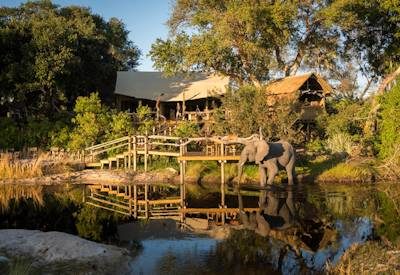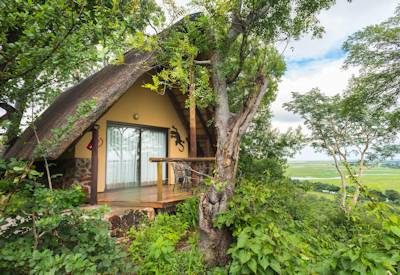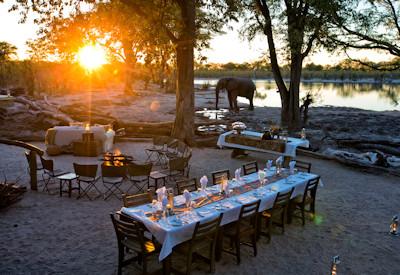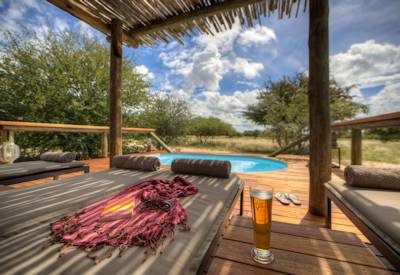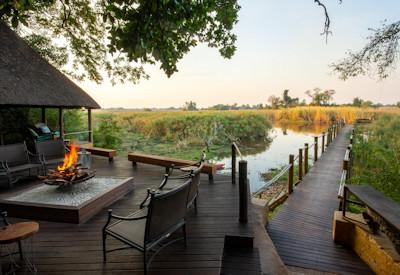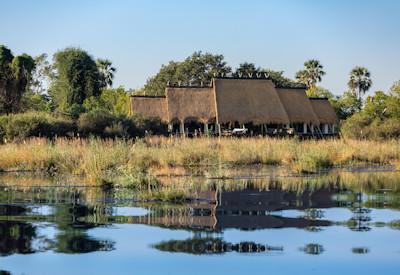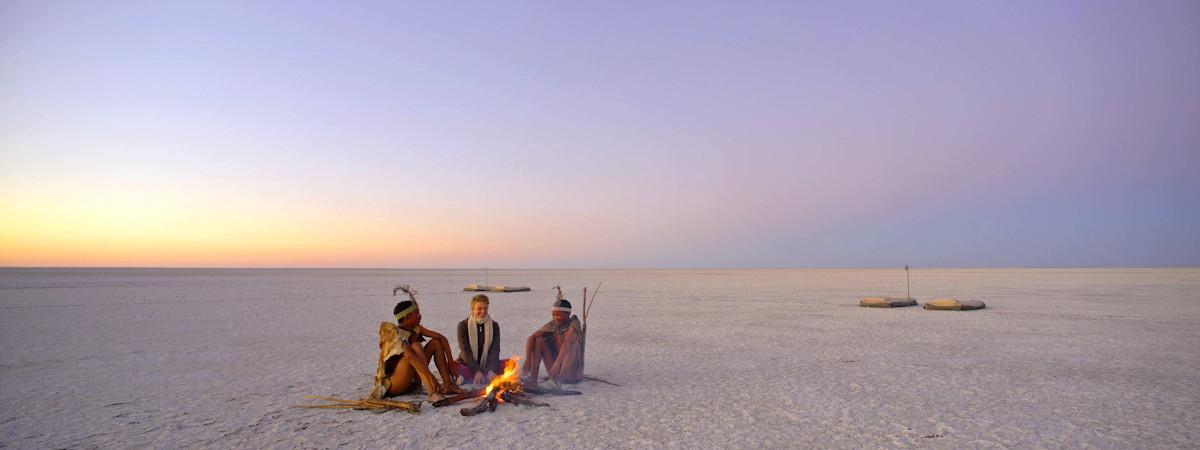
Makgadikgadi Pans
Visit The Makgadikgadi; One Of The World's Largest Salt Pans, A Unique Safari Destination
Makgadikgadi Pans of Botswana, a vast open lifeless land devoid of human habitation, one of the world's largest salt pan on the planet awaits. A truly special place that is only really accessible in the dry winter months visit the amazing Kubu and Kukome Islands for those breathtaking sunsets and sunrises.
Makgadikgadi Pans National Park is definitely one of the most unique places to safari when in Botswana. This vast area of salt pans is completely lifeless and devoid of any human habitation, making it a truly special place to visit. The best time to safari in the Makgadikgadi Pans National Park is during the dry winter months, when the conditions are perfect for exploring this unique landscape.
Kubu and Kukome Islands are two of the most popular places to visit. These islands are known for their stunning sunsets and sunrises, making them a must-see for any visitor to the area.
Yes, a vast area of the pans is not easily accessible, but for those who are willing to go off the beaten track, the experience is like nothing else.
With regards to Nxai Pan and the Nxai Pan National Park, we will, in the coming months, do a separate page. Nxai Pan offers a completely different experience and, therefore, should be on a separate page.
Makgadikgadi Pans Facts
- Size: 16 100km²
- When to visit the park: Mar - Sep is prefered; do not attempt to cross in the rainy season (Nov - May)
- Climate: Summer, hot with extreme daytime conditions (40°C and upwards). Winter is hot to mild during the day
- Rainfall: Between 450mm and 500mm per annum
- Altitude: 900m - 1000m above sea level
- Location: Eastern Botswana, east of Maun, just south of the A3 road (Maun to Nata)
- Accommodation: Lodges In The Kalahari Desert
Where are the Makgadikgadi Pans located?
The pans are located to the east when looking at a Botswana map, although, not too far east, think more along the lines of a central-eastern location, and one would be spot on. Around 100 kilometres from Maun and +- 30 kilometres from Nata.
Having said what we had said above, access to the Makgadikgadi will depend on what part you will be visiting. Will it be the Makgadikgadi National Park, Nwetwe Pan or Sua Pan? All three of these are far apart from each other; as an example, getting from Makgadikgadi Pans National Park to Sua Pan is one long day out and a few 100 kilometres.
To view the Makgadikgadi location from a Google Map, click here: Google Map - Makgadikgadi Pans
Information On the Makgadikgadi Pans
One of the world's largest salt flats, a vast open lifeless land, devoid of human habitation.
Once an ancient great lake in central Botswana and now a dried up lunar expanse, the Makgadikgadi Pans fill with water just once a year when the rains fall, attracting a plethora of game and birdlife to this region of Botswana. During the day, the dusty Makgadikgadi salt flats, with whirlwinds skirting across a seemingly endless desert, offers the best way to come face to face with true isolation.
The Makgadikgadi flood between January and March, if it rains enough. This causes grasses to burst into life, flamingos and water birds to arrive by their thousands to nest, and a great migration of countless zebra and wildebeest to arrive. When this happens, it is one of Africa's great wildlife spectacles. Unfortunately, this huge water spectacle becomes practically inaccessible by road at this time, but anyone fortunate enough to fly over the area during the wet season sees a water wonderland of incredible scenic beauty.
Game viewing here includes black-maned Kalahari lion, leopard, wild dog, cheetah, springbok, gemsbok, herds of wildebeest and zebra, brown hyena and spotted hyena, and eland and other antelopes.
Best Time to Visit the Makgadikgadi Pans?
A simple answer to this question is winter; the pans will be dry and easily accessed or driven over. In summer, the minute the salt pans get wet; they instantly become a no-go area; if one gets stuck, you may have to leave your vehicle as it becomes unrecoverable.
The same principle applies to the National Park area, with winter being best for wildlife and accessing different areas of the park.
A bonus of summer when the pans are flooded is the 1000's of flamingoes that are viewable, especially from the Nata Bird Sanctuary.
Main Attractions Of the Makgadikgadi Pans
- Migrations of wildebeest and zebra during the rainy season
- Kubu Island and Kukome Island
- Boteti River on the western side of the Pans from in from the Okavango Delta
- Seasonally home to thousands of flamingos
- A night out or two wild camping on the pans themselves
- Jacks Camp, San Camp and for the more budget-orientated Planet Baobab
- Driving across the Pans when they are dry
The Makgadikgadi Salt Pans are a vast, open and lifeless land located in eastern Botswana. Once an ancient great lake, the salt pans fill with water just once a year when the rains fall, attracting a plethora of game and birdlife.
During the day, the dusty Makgadikgadi offers the best way to come face to face with true isolation.
Remember; The best time to visit the Makgadikgadi Pans is winter when the pans are dry and easily accessed or driven over.
Main attractions include the migrations of wildebeest and zebra during the rainy season, Kubu Island and Kukome Island, the Boteti River on the western side of the pans, and the chance to drive across the pans when they are dry.
So what are you waiting for? Combine the Makgadikgadi with the Okavango Delta, Moremi Game Reserve, Chobe National park and maybe Victoria Falls for that perfect Botswana safari itinerary.
- Little Tubu Tree Camp
A small yet intimate safari camp that accommodates only six guests at a time, making it the ideal choice for a private and exclusive experience. This camp is perfect for a small group of friends or a family traveling together, offering a cozy and personal setting to enjoy the beauty of the wilderness.
Nestled in a prime location, the wildlife in this area is truly spectacular, with opportunities to spot a wide variety of animals in their natural habitat.
- Muchenje Safari Lodge
11 thatched chalets are available at Muchenje Safari Lodge are set high on an escarpment and have been designed to take full advantage of the breathtaking views over the surrounding floodplains.
The lodge is perfectly positioned, bordering the renowned Chobe National Park, a haven for wildlife enthusiasts, while offering breathtaking views of the Chobe River and Namibia's Caprivi Strip. Guests can enjoy the tranquility of the lodge's secluded location while being surrounded by some of Africa's most iconic landscapes and wildlife.
- Hyena Pan
Hyena Pan is an intimate safari camp in Botswana's beautiful Khwai Private Reserve. This exclusive camp offers unparalleled access to the wildlife of the area, including elephant, buffalo, lion, leopard and wild dog, as well as abundant birdlife.
Guests can enjoy luxurious tented suites with private decks and stunning views over the bushveld.
A variety of activities are available such as morning and afternoon game drives, a ground-level hide alongside the waterhole and wildlife walks with a highly skilled guide.
Families with children over 6 years are welcome and can make the most of this unique experience!
- Dinaka Camp
Dinaka Camp is located just north of the famed Central Kalahari Game Reserve in its own 200km² private game reserve. Dinaka Camp, surrounded by the beautiful Kalahari Desert landscape and home to some of the best wildlife in southern Africa, Dinaka Camp is a safari lover's paradise.
With game drives and guided bush walks available, as well as several photographic hides and platforms, you are sure to see some amazing desert wildlife during your stay. And don't forget the swimming pool - perfect for cooling off after a hot day in the desert sun!
- Nxamaseri Island Lodge
Located in Botswana's Okavango Delta Panhandle, Nxamaseri Island Lodge offers a unique African safari experience. Guests can relax in one of eight Safari Chalets, built with traditional materials and furnished with locally made pieces that showcase the region's culture.
Nxamaseri Island Lodge is the ultimate retreat for those seeking an extraordinary Botswana safari and a truly memorable African adventure.Nestled in the tranquil Panhandle region of Botswana's Okavango Delta, Nxamaseri Island Lodge offers an exceptional African safari experience.
- Selinda Suite
The Selinda Suite is a haven of exclusivity and elegance in Botswana's Selinda Reserve. Perfect for those seeking privacy, this luxurious two-bedroom retreat offers a truly personalised experience.
With a spacious layout, refined decor, and dedicated staff—including a private guide, vehicle, chef, and butler—your stay is tailored for comfort and convenience at every step.

